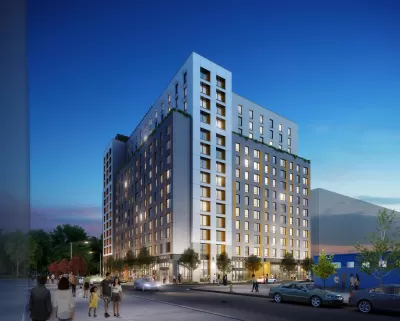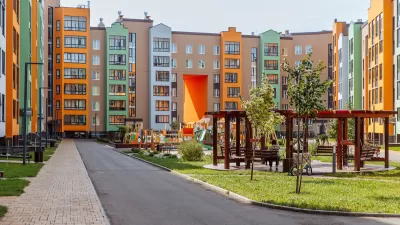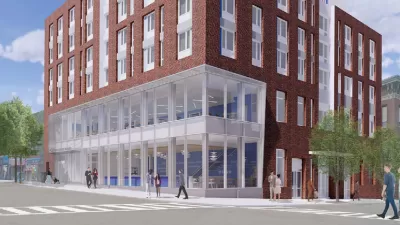A 14-story tower uses the ‘Passive House’ approach to drastically reduce energy use and improve quality of life for residents.

Writing for Bloomberg CityLab, Lizzie Kane describes a mixed-use Brooklyn development that combines affordable housing with sustainability via Passive House methods. The project is part of the East New York Neighborhood Plan, which is designed to guide responsible development in the area.
The building, known as Chestnut Commons, is the largest multifamily Passive House building in the state at 300,000 square feet. As Kane explains, “This European-born energy-efficiency standard combines advanced technology for ventilation, insulation and airtightness with design solutions that help retain heat in the winter and keep it out in the summer.” In addition to efficiency benefits, the Passive House approach also reduces noise and air pollution, Kane adds. “Thanks to its Passive House features, Chestnut Commons enjoys a 70% reduction in energy costs. An energy recovery ventilation system in each apartment raises efficiency, while highly insulated units prevent outside temperatures from intruding.”
The building features 275 affordable residential units and ground-floor retail. “Beyond the residential spaces, Chestnut Commons is also designed to offer amenities and resources for the surrounding community, including a neighborhood community center that now inhabits one of the first-floor retail spaces beneath the apartments.”
FULL STORY: Low-Income Apartments That Set a High Standard for Energy Efficiency

Alabama: Trump Terminates Settlements for Black Communities Harmed By Raw Sewage
Trump deemed the landmark civil rights agreement “illegal DEI and environmental justice policy.”

Study: Maui’s Plan to Convert Vacation Rentals to Long-Term Housing Could Cause Nearly $1 Billion Economic Loss
The plan would reduce visitor accommodation by 25% resulting in 1,900 jobs lost.

Planetizen Federal Action Tracker
A weekly monitor of how Trump’s orders and actions are impacting planners and planning in America.

Waymo Gets Permission to Map SF’s Market Street
If allowed to operate on the traffic-restricted street, Waymo’s autonomous taxis would have a leg up over ride-hailing competitors — and counter the city’s efforts to grow bike and pedestrian on the thoroughfare.

Parklet Symposium Highlights the Success of Shared Spaces
Parklets got a boost during the Covid-19 pandemic, when the concept was translated to outdoor dining programs that offered restaurants a lifeline during the shutdown.

Federal Homelessness Agency Places Entire Staff on Leave
The U.S. Interagency Council on Homelessness is the only federal agency dedicated to preventing and ending homelessness.
Urban Design for Planners 1: Software Tools
This six-course series explores essential urban design concepts using open source software and equips planners with the tools they need to participate fully in the urban design process.
Planning for Universal Design
Learn the tools for implementing Universal Design in planning regulations.
Caltrans
Smith Gee Studio
Institute for Housing and Urban Development Studies (IHS)
City of Grandview
Harvard GSD Executive Education
Toledo-Lucas County Plan Commissions
Salt Lake City
NYU Wagner Graduate School of Public Service





























